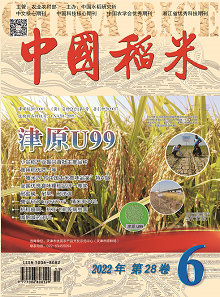The effects of cold-adapted microbial consortium HT20 on rice straw decomposition, nutrient release characteristics and soil nutrient dynamics in the coastal rice area of eastern Hebei were investigated. The experiment adopted the litter bag method, and set up three treatments: straw returning to the field without straw-decomposing inoculants(CK), straw returning to the field with the application of Nongfukang(JF) and straw returning to the field with the application of HT20(JH). Straw and soil samples were partially removed for analysis at the transplanting stage, tillering stage, jointing stage, booting stage, heading stage, milk ripening stage, and the maturation stage. Then, the straw mass, nitrogen, phosphorus, and potassium nutrient residue rates for the straw and soil nutrient content were determined. Compared with CK and JF treatment, the residual rate for straw mass in the JH treatment decreased by 9.01%-24.08% and 4.68%-11.31% during the sampling period respectively, the residual rate for straw nitrogen decreased by 15.56%-24.94% and 26.54%-36.31% during the transplanting stage and jointing stage, the residual rate for straw phosphorus decreased by 9.68% and 11.28% at the jointing stage, the residual rate for straw potassium was no significant difference among them, the residual rates of nitrogen, phosphorus and potassium increased negatively in the later stage. Compared with CK and JF treatment, the soil available nitrogen contents in the JH treatment increased by 53.33% and 4.55% at the tillering stage, respectively; the soil available phosphorus content increased by 195.62% and 65.80% at the jointing stage, and increased by 138.14% and 195.62% at the heading stage, respectively; the soil available potassium content increased by 7.64%-168.87% and 29.34%-179.30% during the sampling period, respectively. Compared with CK and JF treatment, the number of tillers in the JH treatment significantly increased by 14.10% and 16.57%, and the rice yield increased by 11.25% and 17.11%. It can be seen that the cold-adapted microbial consortium(HT20) could speed up the decomposition process of returning straws and the release of straw nutrients, improve soil fertility, promote rice tillering and growth, and then increase rice yield.

